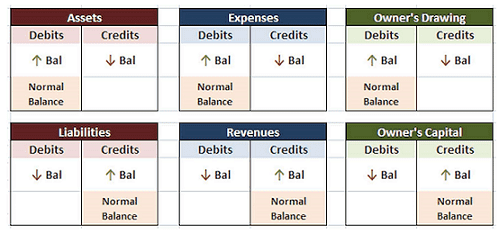
At the outset, it’s important for you to understand that PV calculations involve cash amounts—not accrual amounts. For the past 52 years, Harold Averkamp (CPA, MBA) has worked as an accounting supervisor, manager, consultant, university instructor, and innovator in teaching accounting the present value of a single sum online. The articles and research support materials available on this site are educational and are not intended to be investment or tax advice. All such information is provided solely for convenience purposes only and all users thereof should be guided accordingly.
Why You Can Trust Finance Strategists
For a lump sum, the present value is the value of a given amount today. For example, if you deposited $5,000 into a savings account today at a given rate of interest, say 6%, with the goal of taking it out in exactly three https://www.bookstime.com/articles/purchase-order-vs-invoice years, the $5,000 today would be a present value-lump sum. Assume for simplicity’s sake that the account pays 6% at the end of each year, and it also compounds interest on the interest earned in any earlier years.
Future Value of $1
This present value calculator can be used to calculate the present value of a certain amount of money in the future or periodical annuity payments. The present value of a single amount is an investment that will be worth a specific sum in the future. For example, if you invest $1,000 today at an interest rate of 12%, it’ll be worth $2,000 in 5 years.
Get Your Questions Answered and Book a Free Call if Necessary
Knowing what these future earnings will be can help a business decide if the current investment is worth the long-term potential. Recall, the future value (FV) as the value of an investment after a certain period of time. Future value considers the initial amount invested, the time period of earnings, and the earnings interest rate in the calculation. For example, a bank would consider the future value of a loan based on whether a long-time client meets a certain interest rate return when determining whether to approve the loan. For example, if you are due to receive $1,000 five years from now—the future value (FV)—what is that worth to you today? Using the same 5% interest rate compounded annually, the answer is about $784.
Where Should We Send Your Answer?
- In this section we will demonstrate how to find the present value of a single future cash amount, such as a receipt or a payment.
- In the present value formula shown above, we’re assuming that you know the future value and are solving for present value.
- The interest rate selected in the table can be based on the current amount the investor is obtaining from other investments, the corporate cost of capital, or some other measure.
- Some individuals refer to present value problems as “discounted present value problems.”
- Periods represent how often interest is compounded (paid); that is, periods could represent days, weeks, months, quarters, years, or any interest time period.
In other words, you “earn interest on interest.” The compounding of interest can be very significant when the interest rate and/or the number of years is sizeable. If you find this topic interesting, you may also be interested in our future value calculator, or if you would like to calculate the rate of return, you can apply our discount rate calculator. Keep reading to find out how to work out the present value and what’s the equation for it. This example shows that if the $4,540 is invested today at 12% interest per year, compounded annually, it will grow to $8,000 after 5 years.


Of course, both calculations also hinge on whether the rate of return you chose is accurate. In these situations, we simply adjust the number of interest periods and the interest rate. Or you may want to know the number of years an amount must be invested in order to grow to a certain amount. In all these cases, we have two of the three items in the formula, and we can solve for the third. Once the amount for $1 is known, it is easy to determine the amount for any principal by multiplying the future amount for $1 by the required principal amount. Many hand calculators also have function keys that can be used to solve these types of problems.
- This is equivalent to saying that at a 12% interest rate compounded annually, it does not matter whether you receive $8,511.40 today or $15,000 at the end of 5 years.
- Similar to the Future Value tables, the columns show interest rates (i) and the rows show periods (n) in the Present Value tables.
- Many times in business and life, we want to determine the value today of receiving a specific single amount at some time in the future.
- For example, if $1,000 is deposited in an account earning interest of 6% per year the account will earn $60 in the first year.
- Use the future value tables provided in Appendix B when needed, and round answers to the nearest cent where required.
If you received $100 today and deposited it into a savings account, it would grow over time to be worth more than $100. This fact of financial life is a result of the time value of money, a concept which says it’s more valuable to receive $100 now rather than a year from now. To put it another way, the present value of receiving $100 one year from now is less than $100. Present value is a way of representing the current value of a future sum of money or future cash flows. While useful, it is dependent on making good assumptions on future rates of return, assumptions that become especially tricky over longer time horizons.

Visualizing The Length of Time (n)
- The company would be receiving a stream of four cash flows that are all lump sums.
- Money is worth more now than it is later due to the fact that it can be invested to earn a return.
- Working backwards from $100 at 5% we see that this amount is worth only $95.24 if it were to be received in 1 year; $90.07 in 2 years; and $86,38 in 3 years.
- If, let’s say, the $1,000 earns 5% a year, compounded annually, it will be worth about $1,276 in five years.
- For example, if you had the choice of receiving $12,000 today or in 2 years, you would take the $12,000 today.
- To calculate the present value of a stream of future cash flows you would repeat the formula for each cash flow and then total them.
